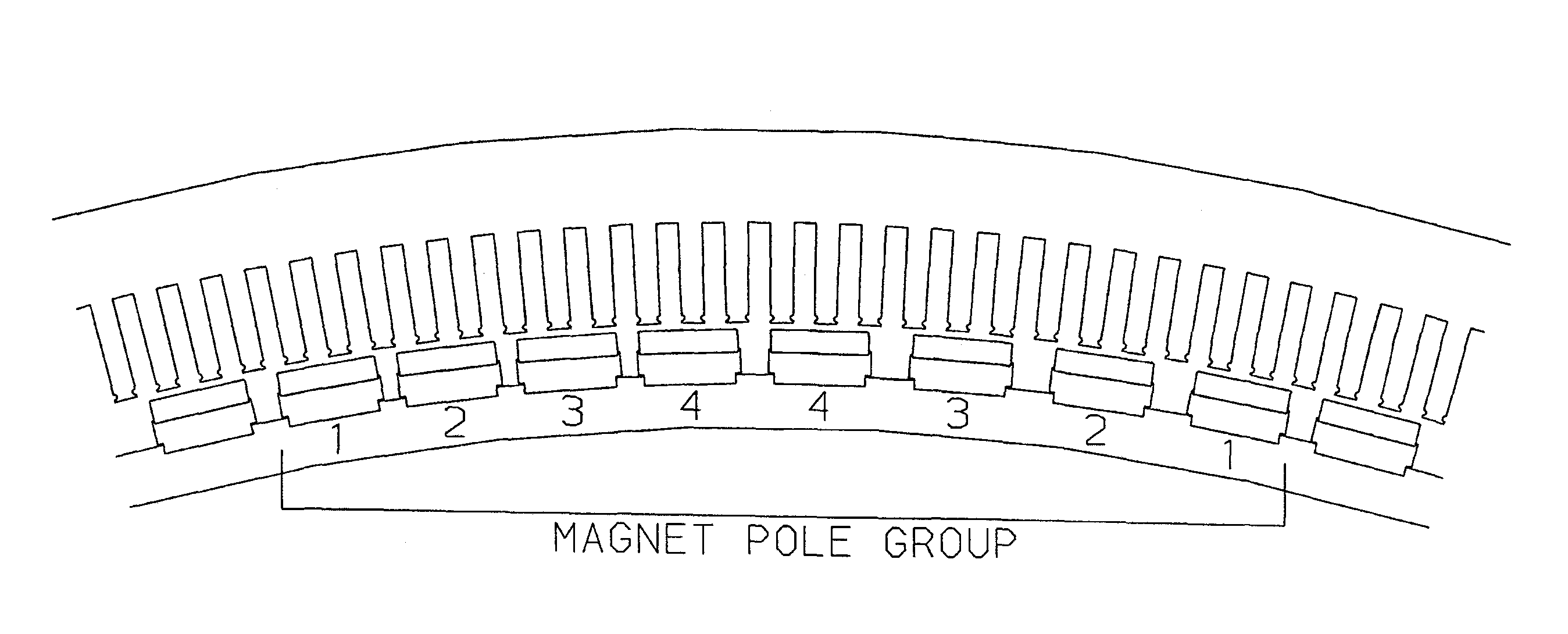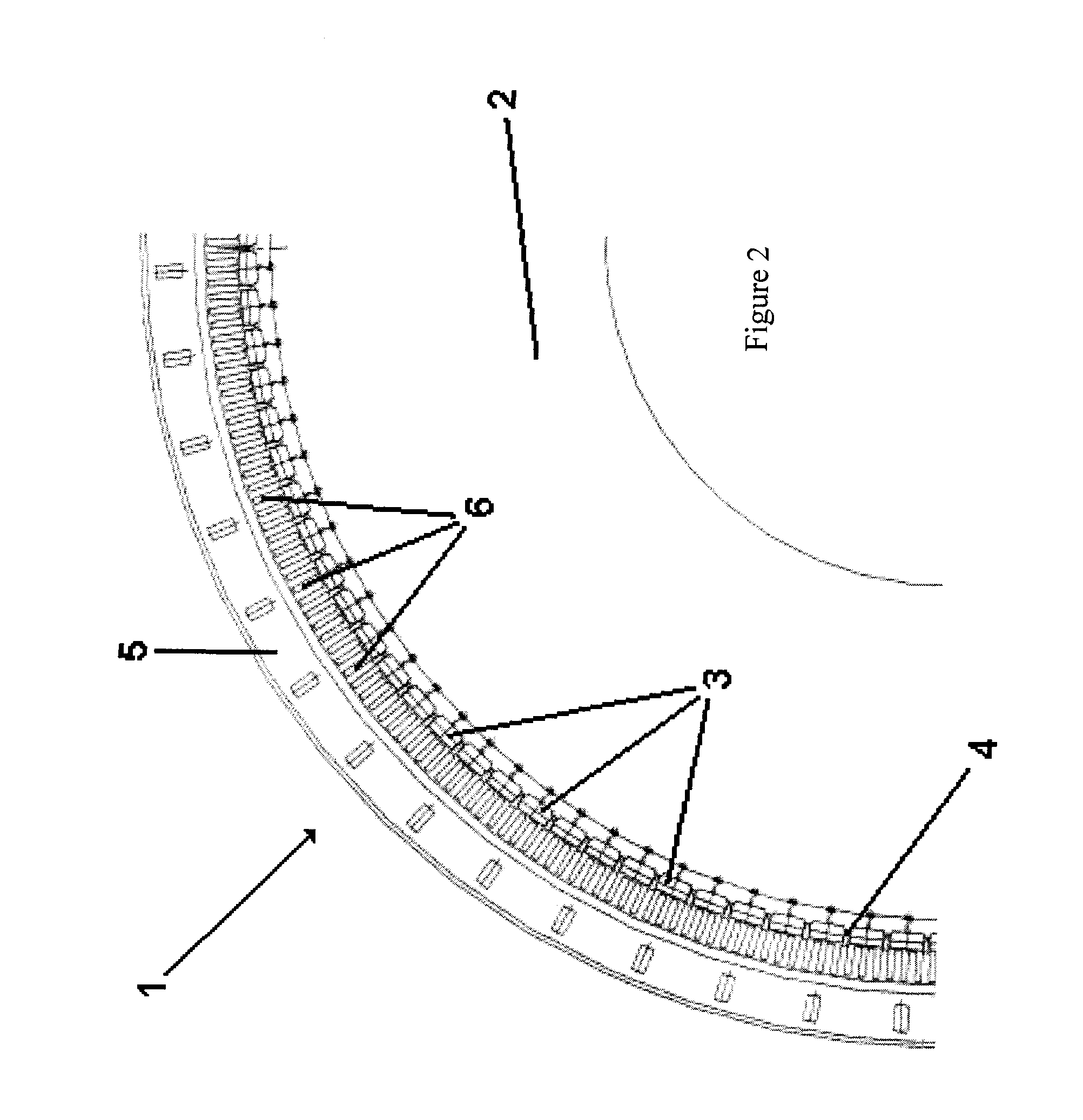Electrical machines with reduced cogging
a technology of electric machines and cogging, applied in the direction of dynamo-electric machines, electrical apparatus, magnetic circuits, etc., can solve the problems of reducing efficiency and reliability, unwanted vibration and noise, and the operation of electrical machines, so as to reduce cogging and reduce cogging
- Summary
- Abstract
- Description
- Claims
- Application Information
AI Technical Summary
Benefits of technology
Problems solved by technology
Method used
Image
Examples
Embodiment Construction
[0067]A typical conventional construction of a low-speed large-diameter electrical generator 1 is shown in FIGS. 2 and 3. The rotor 2 has one hundred and twelve magnet poles 3 mounted around its outer rim 4. The magnet poles 3 are equally spaced from each other such that they are equally spaced around the circumference of the rim 4. That is, the magnet poles 3 are each positioned in their reference positions and the reference angular magnet pole pitch is 3.21° (360° / 112). The rotor 2 is rotatably mounted within a stator 5 and there is an air gap 7 formed between the inner surface of the stator 5 and the outer surface 8 of the magnet poles 3. The stator 5 contains three hundred and thirty-six equally spaced winding slots 6 formed in its inner surface, i.e., three winding slots per magnet pole. This equates to a reference angular winding slot pitch Sp of 1.07°, a third of the magnet pole pitch. Each winding slot 6 contains a portion of a stator winding (not shown) and the winding slot...
PUM
 Login to View More
Login to View More Abstract
Description
Claims
Application Information
 Login to View More
Login to View More - R&D
- Intellectual Property
- Life Sciences
- Materials
- Tech Scout
- Unparalleled Data Quality
- Higher Quality Content
- 60% Fewer Hallucinations
Browse by: Latest US Patents, China's latest patents, Technical Efficacy Thesaurus, Application Domain, Technology Topic, Popular Technical Reports.
© 2025 PatSnap. All rights reserved.Legal|Privacy policy|Modern Slavery Act Transparency Statement|Sitemap|About US| Contact US: help@patsnap.com



